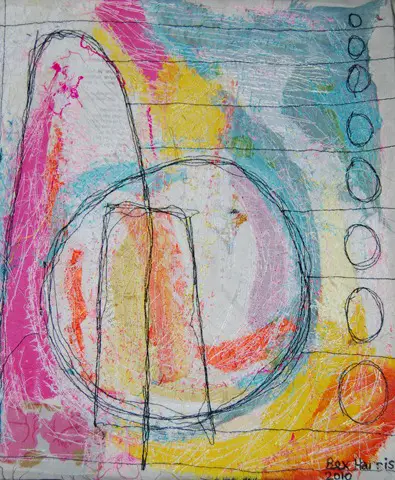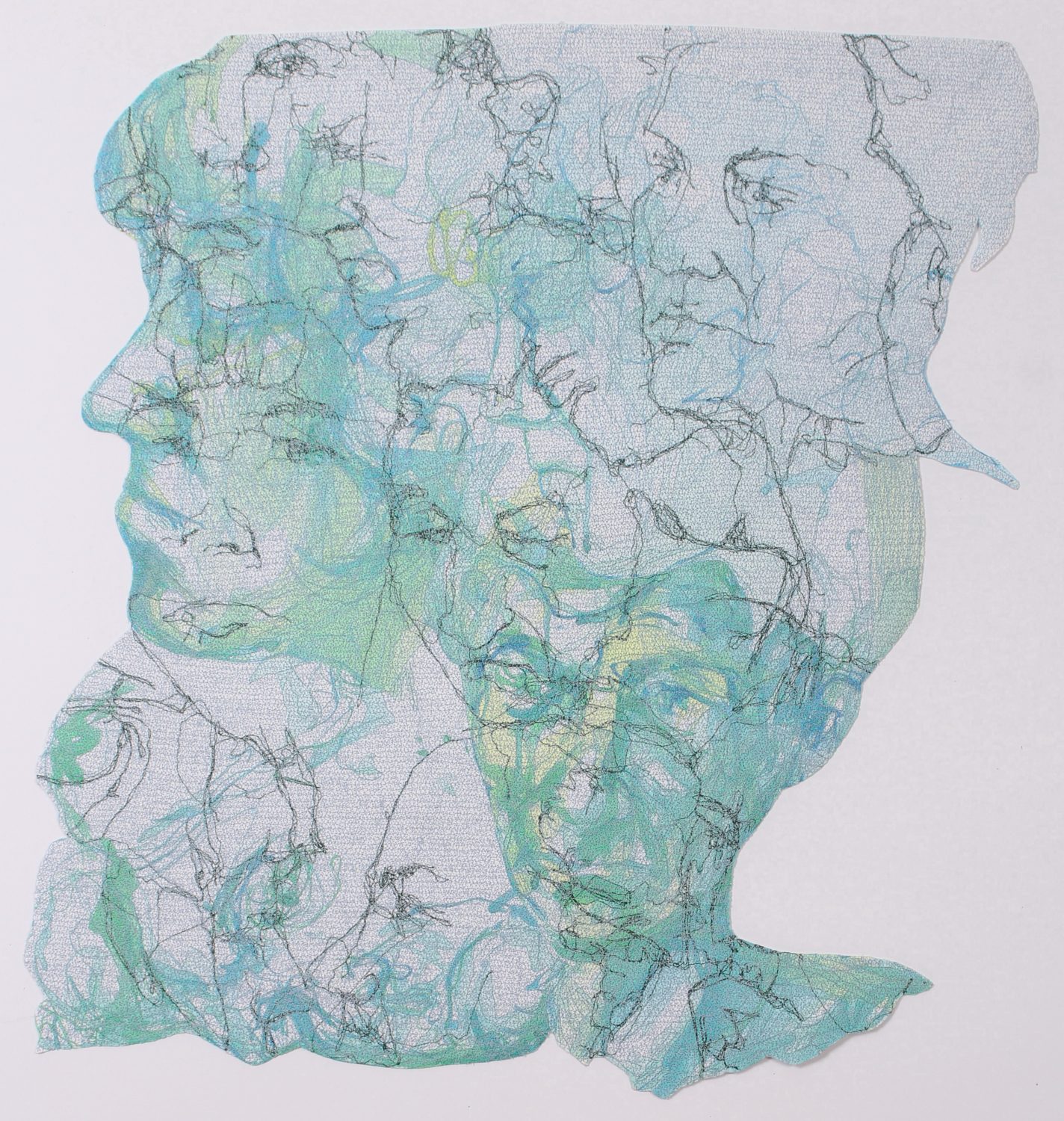
Welcome to ARTeries where we lead you to broader interpretations of “embroidery”. In the dictionary, it’s defined as “Embroidery: the art or handicraft of decorating fabric or other materials with needle and thread or yarn,” but in our lexicon it means everything from “classic” embroidery to art quilting, mixed media, sculpture, book and paper arts, with new methods, old techniques revisited, and the weird and wonderful.
Good Mo-o-o-or-rning Fibristas and Fibristos! Today we will be learning how to be original, be an individual, an eccentric, a Style unto Oneself, create Masterpieces, stun your friends and colleagues with your genius and imagination, and amaze even yourself with your own talents! How, you ask? D R A W. That’s right: draw, sketch, scribble, illustrate, chronicle visually, jot down and record.
I personally am interested in references that show the transition from sketch to other mediums. I work primarily with textiles, though i’m also interested in assemblage, sculpture and functional work. Sometimes i feel as if i’m making it up as i go along, because there aren’t a lot of sites or books dedicated to this area of development.
It doesn’t matter if you “can’t draw”—and i say this to those who have just embarked on this adventure *and* those who have been experimenting and working for awhile. Whether it’s a plain sketchbook, an art journal or a project for presentation, once the idea is on paper, no matter how roughly, you can develop and explore the possibilities. Brain-storm, ask “what if”, get silly, collaborate. Paths open up and sparks fly into the air; you develop your own unique voice by practicing, practicing, practicing. Keep separate sketchbooks, if it helps themes, series or particular styles. Let your subconscious take over-no preconceptions, no planning, no agonizing over what the sketch “should” be. If this scares you, prep pages ahead of time, with washes of colour, scribbles, text, collaged elements. Put them away and don’t look at them until you use them.
Turn things upside down, cut them into pieces. Juxtapose them with the unexpected. Get out the crayons, the watercolours, the scissors and paste. I use dyes from my textile work and stack pages so seepage is absorbed by the underlayers. These pages often become more inspirational and functional than the top piece. (You can use either OTC dyes like Rit, Dylon or Tintex, or water down acrylic paints too.) Cut these pages up, cut up the main page and slap some glue on—-collage your collages! Use photocopiers, home printers, photo editing programs to really mix things up. Simply changing the colour ratios, turning it into a negative, adding special effects to twist or swirl can open up new directions as well. There is a Latin phrase “Concupiscientia Oculorum ” that i have long subscribed to-it translates basically as “visual excitement leading to sensory stimulation” and is often thought of as “lust of the eyes”!
Or “find” the image–remember when you were a child and saw shapes in clouds? The only colour on this one was the blotchy scarlet areas that became a Rorschach Exploded Pomengranate!
The mediums chosen to translate the sketches into other forms are tools to flesh out and bring breath to your art. As a textile/mixed media artist, i then look at the resulting sketches/paintings and start assessing the marks – can this one be a hand embroidered spider-web stitch? Should this area be burnt or melted away in a “hot textile technique”? Does this one move into three dimensional form easily? Should certain sections be left raw, or painted, heavily encrusted with stitch, or layered with torn papers? Will these areas translate into a particular weave or texture of fabric? Artists in other media will look at zones that can become three dimensional in clay, steel, on canvas with different paint techniques, or a movement in dance. I successfully initiated an Exquisite Corpse project, where sketches on fabric were translated into innovative textile work.
Look at Bex Harris’s work:
She freely translates from her sketches with “conventional” mark making tools and then her sewing machine, editing, altering and enhancing certain elements of her designs. Quick rough scribbles become colourful, personally iconographic embroideries.
Sometimes the easiest way is effective as well, though less intuitive. Or use fabrics patched together and treat them the way you would paper. And of course the redoubtable Jude has an idea as well, again working directly on the fabric. I also love this creepily wonderful wearable/sculptural work by “the great greckler”, illustrated from sketch to execution.
Several books that i can recommend for textile/mixed media artists are:
- Creating Sketchbooks for Embroiderers and Textile Artists: Exploring the Embroiderers’ Sketchbook
by Kay Greenlees, a very comprehensive and technical approach to compiling work. - Embroidery from Sketch to Stitch
by Pat Langford. Not a how to, but invaluable to see the translation from mark on the page to machine and hand embroidery.
- The premiere writer/artist in this field, Maggie Grey: From Image To Stitch
and Textile Translations: Mixed Media
None of these are “project” books, focusing more on technique and personal exploration. There are a plethora of books on other methods of using needle, thread, paint, paper, etc that can be used with these references, but that’s something you have to define yourself. Get scribbling–perhaps your doodles will be your path to fame and fortune!
Arlee Barr is a Canadian artist, working primarily with textiles. She describes herself as “curious, eccentric and just a little opinionated“. Surrealist in thought, Fauvist at heart, Arlee likes the eclectic, explorative and absurd. Sprinkled around the interwebs, she can be found hanging around her fantastic blog and shop.








